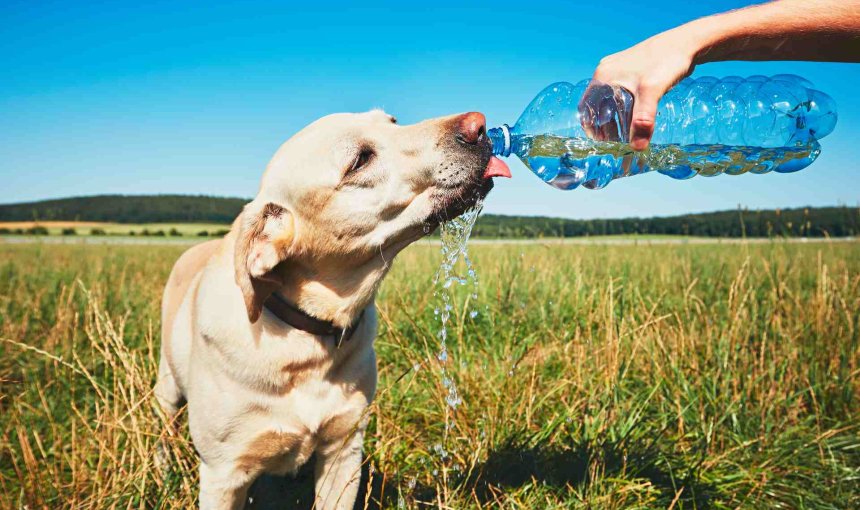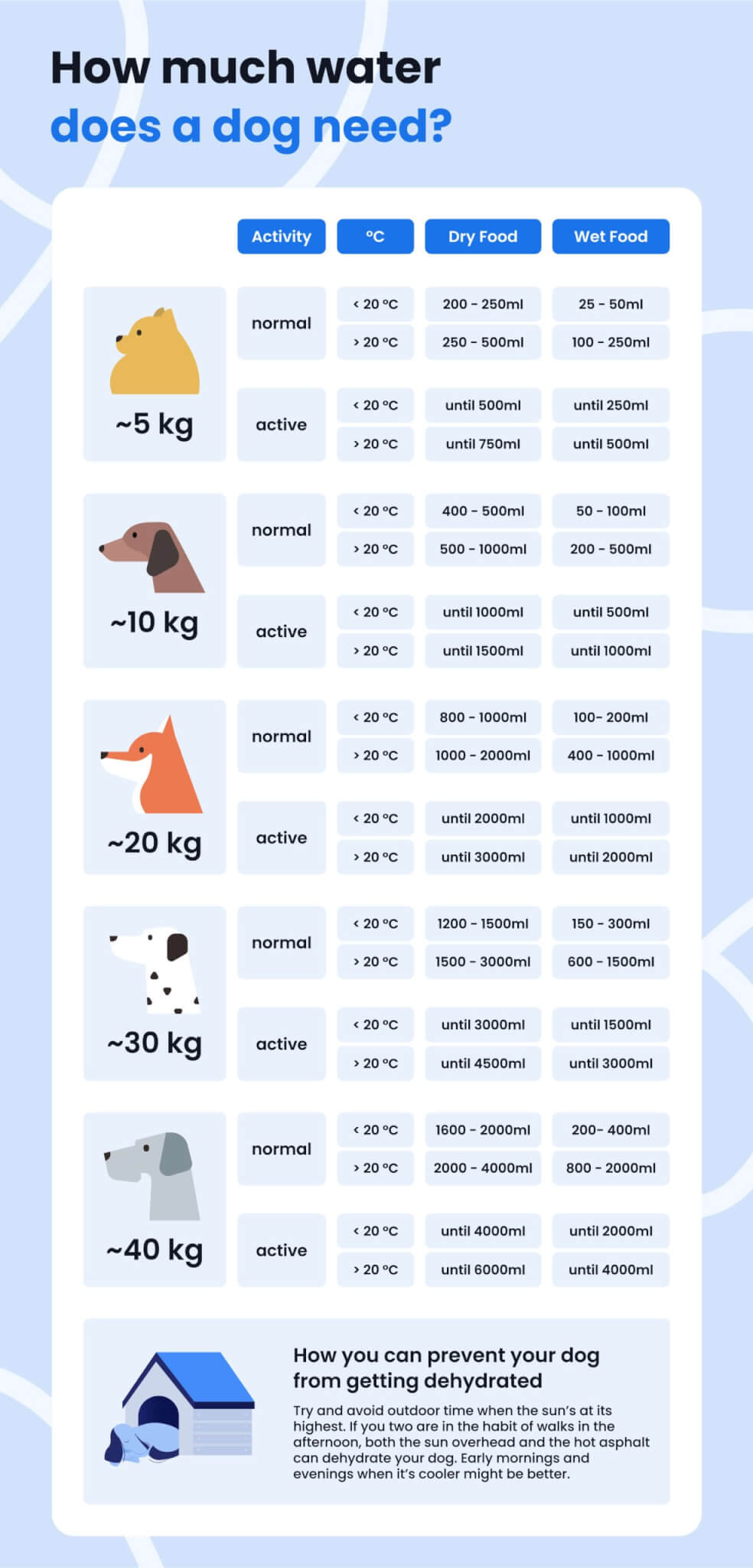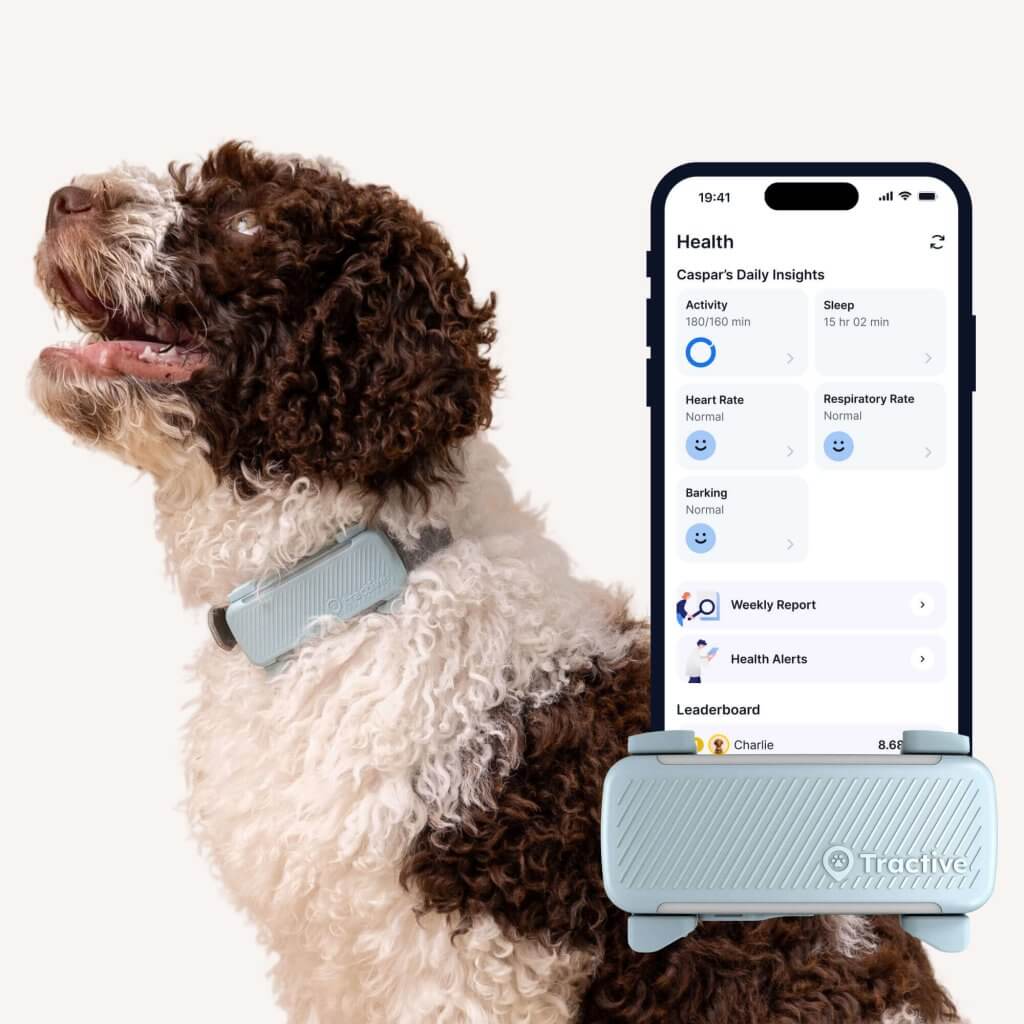 Approved by Dr. Dwight Alleyne, DVM
Approved by Dr. Dwight Alleyne, DVM The Sneaky (And Not So Sneaky) Signs Of Dehydration In Dogs
You might think it's just lapping up a ton of water - but the signs of dehydration in dogs can be sneakier than that. Here's everything you need to know to keep your buddy safe.

You might think the first signs of dehydration in dogs means your buddy drinking water like crazy. But sadly, it’s more common than you’d think – and the signs aren’t always easy to spot. Left untreated, dehydration is a serious medical condition. So it’s important you know what to watch out for, why your dog might get dehydrated – and take action right away. (Like, for example, a drop in your dog’s activity which can signal weakness or lethargy.) Let’s get started.
Key Takeaways
- Some of the most common signs of dehydration in dogs include dry gums, sunken eyes, lethargy, loss of skin elasticity, and excessive panting.
- Common causes include heat exposure, vomiting, diarrhea, fever, and insufficient water intake. Puppies, senior dogs, and small breeds are especially vulnerable.
- You can prevent dehydration by making sure your dog always has access to fresh, clean water. For moderate to severe symptoms, head over to your vet.
- Tractive’s GPS & Health Tracker offers vital signs and activity monitoring, helping you track changes in rest or energy levels or even your dog’s breathing or heart rate that could signal dehydration – so you can take action early.

Always know your buddy is healthy & safe
Read moreSigns of dehydration in dogs
Much like with us humans, dehydration isn’t always super obvious right away. Rather, it can sneak up on your dog and turn up as:
- Dry gums
- Dry nose
- Sticky saliva
- Skin tenting – meaning if you gently pinch your dog’s skin, it doesn’t snap back in place right away. Rather, it stays “tented.”
- Excessive panting
- Sunken eyes
- Loss of appetite
- And more obvious signs of sickness like weakness, lethargy, vomiting, and diarrhea
Each of these signs might take a while to turn up. Rather, your dog might signal they’re sick in other, more subtle ways – like a drop in their overall energy or activity.
It’s why vets recommend to:
“Keep track of your dog’s energy levels, especially how long they are able to walk.
If you notice significant declines, it could be a sign of pain, heart disease, or other illness.”
– VCA Animal Hospitals1
Left untreated – dehydration in dogs can be deadly. In more serious cases, it can lead to unconsciousness, kidney failure, and even death. Which brings up the question…
Why is my dog dehydrated?
Your dog tends to lose water from their bodies in a whole bunch of ways. Including from panting, breathing, peeing, pooping, and even through their paws. Usually, they make up for this loss of water when they eat and drink.
But if there’s something preventing your dog from eating or drinking – usually an illness – it might end up dehydrating them. (Because they now can’t replenish the water they’ve lost, right?)
So you might find your dog more likely to get dehydrated due to:
- Hot, humid weather
Especially if your buddy spends a lot of time outdoors. Which can increase their risk of heat stroke, if you’re not mindful. - Overexertion
Even more so if your dog’s already on the active side. Too much play and exercise can lead them to sweat and lose water faster than they can replenish it. - Illness
Like if your dog is already vomiting, experiencing diarrhea, or has a fever. All of these can lead to them losing water very quickly from their bodies. - Lack of access to fresh water
Which gets worse the more active they are.
🚩 So if your normally active dog now seems more reluctant around playtime or grumbles when it’s time for a walk – take note. It could be a red flag you might miss otherwise!
What to expect at the vet
Now hopefully, you’ve dropped by for a checkup before your buddy’s symptoms worsen. Your vet will most likely begin with a thorough physical examination, checking your dog’s teeth and gums for the first signs of dehydration.
Come prepared to answer questions about your dog’s:
- Water intake,
- Activity level,
- Favorite hangout spots outdoors,
- Symptoms, including when they first began and how long they’ve been going for,
- And any other recent changes in behavior.
Your vet might also run a few tests, like a blood panel or urinalysis to check for what underlying illness might be dehydrating your dog. In more serious cases, they might have to put your dog on intravenous (IV) fluids to get them hydrated again.
How you can prevent your dog from getting dehydrated at home
Now that you know the signs of dehydration in dogs, it’s always smarter to take steps to prevent it from happening again. So you should:
- Ensure your dog has access to fresh, clean water
Both indoors and outdoors. Water stations around your house can help your buddy stay hydrated throughout the day. - Try and avoid outdoor time when the sun’s at its highest
If you two are in the habit of walks in the afternoon, both the sun overhead and the hot asphalt can dehydrate your dog. Early mornings and evenings when it’s cooler might be better. - Add some water-rich foods to your dog’s food bowl
Cucumbers and watermelon are safe vegetables for dogs to eat in moderate amounts. Else, wet food tends to be more hydrating than dry kibble. - Ensure your dog can rest in cool, shady areas throughout the day
Especially if they’ve spent a lot of time outdoors. - Bring along plenty of water
Primarily while out hiking, playing, or running together outdoors. - Be mindful of how much water your dog drinks at once
If they drink too quickly, they might barf it all back out – which can dehydrate them because of the fluid loss.
In general, how much water your dog should drink depends on a bunch of factors – including their age, size, activity level, and breed. Here’s an infographic that can help:

Finally, it’s a good idea to monitor your dog’s activity levels throughout the day. A sudden drop can signal an emergency – but that’s usually if your dog’s already struggling with a serious illness that’s gotten worse over time.
But more often than not, sickness can turn up as a gradual drop in your dog’s energy and activity – often over many weeks, if not longer. Which, given how subtle it is, can be easy to miss.
Where a Tractive smart dog tracker can help
With its built-in motion detector, your Tractive GPS & Health tracker monitors your dog’s movements throughout the day – logging them in as “active minutes.” Which, with time, can help you figure out:
- How active your dog is on the regular (when they’re normal and healthy),
- Your dog’s vital signs, including their breathing rate and heart rate. Excessive panting, for example, could be a sign of dehydration.
- And if there’s a drop in your dog’s active minutes – which could be a sign of dehydration, a stomach bug, pain, or worse.
So you can take action early when it comes to monitoring your dog’s health – and get them to a vet before they get worse.

Get health alerts for your dog
Our pups can’t always tell us if something’s wrong. But if their tracker detects unusual changes in their routine, you’ll get an alert, helping you catch potential issues early.
Article Sources
Your furry friend’s health and wellbeing means as much as to us as it does to you. So we’ve made it a priority to only share medically-relevant content on our blog. This post was checked, double-checked, and medically verified by Georgia-based vet, Dr. Dwight Alleyne.

Dr. Dwight Alleyne, DVM
Originally from Long Island, New York, Dr. Alleyne began his career at a no-kill animal shelter before becoming a licensed veterinary technician. He graduated from Cornell University Veterinary College in 2006 and completed an internship at Purdue University. Now practicing in Georgia, Dr. Alleyne specializes in soft tissue surgery and ultrasounds. He also writes pet health articles on his website, “The Animal Doctor Blog” (www.anmldrblog.com).



